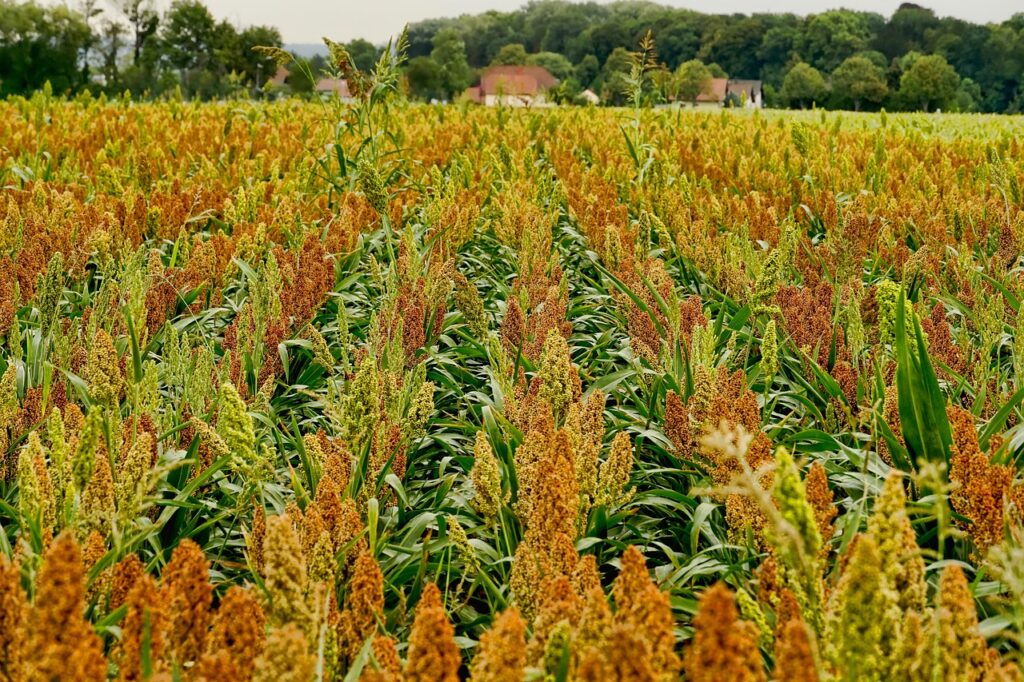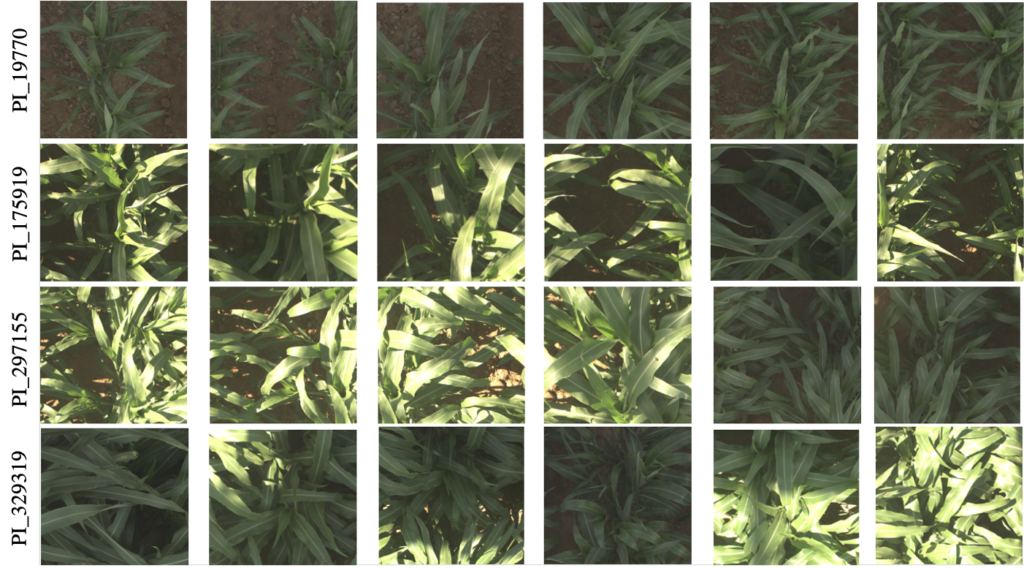The aim of the Sorghum -100 Cultivar Identification – FGVC 9 competition is to predict the cultivar which is shown in the image( a cultivar is a plant variety that has been produced in cultivation by selective breeding).
A high accuracy machine learning predictor of the species captured by the sensor data can be used to determine where errors in the planting process may have occurred. For example, seed may be mislabeled prior to planting, or planters may get jammed, depositing seeds non-uniformly in a field. Both types of errors are surprisingly common and can cause major problems when processing data from large-scale field experiments with hundreds of cultivars and complex field planting layouts.

The Competition
This figure below shows sample images from four different cultivars and highlights the high inter-class visual similarity between the different classes, as well as the high variability in the imaging conditions from one day to the next, or even over the course of a day.

Dataset
The Sorghum-100 dataset is a curated subset of the RGB imagery captured during the TERRA-REF experiments, labeled by cultivar. This data can be used to develop and assess a variety of plant pheno-typing models which seek to answer questions relating to the presence or absence of desirable traits. For example, the image could be used to assess whether the plant in the image exhibits signs of water stress or not.
The Sorghum-100 dataset consists of 48,106 images and 100 different sorghum cultivars grown in June of 2017.
Each image is taken using an RGB spectral camera taken from a vertical view of the sorghum plants in the TERRA-REF field in Arizona.
Evaluation
The evaluation metric for the competition is simple mean classification accuracy, i.e, how often does the model correctly predicts that the image came from correct cultivar.
Timelines
The competition began on 15th March 2022 and has the final submission deadline on 30th May 2022. Meanwhile, the deadline for entry into the competition and team merger is 23rd May 2022.
Prizes
There is no cash prize for this competition.
Since this competition is a part of the Fine-Grained Visual Categorization, FGVC 9 workshop at the Computer Vision and Pattern Recognition Conference CVPR 2022, a panel will review the top submissions for the competition based on the description of the methods provided. From this, a subset may be invited to present their results at the workshop. Attending the workshop is not required to participate in the competition; however, only teams that are attending the workshop will be considered to present their work.
To be a part of the Sorghum -100 Cultivar Identification – FGVC 9 competition, you just need to have a Kaggle Account. To know more about this challenge and participate in it, click here.
Good Luck!
Other Articles you might be Interested In
FGVC launches Computer Vision Challenge for Recognizing hotels to Combat Human Trafficking
Qiskit opens applications for Quantum Error Correction Summer School 2022
ConvNext: The ConvNet for the Roaring 20s
Getting Started with Quantum Computing? Check out these Resources!